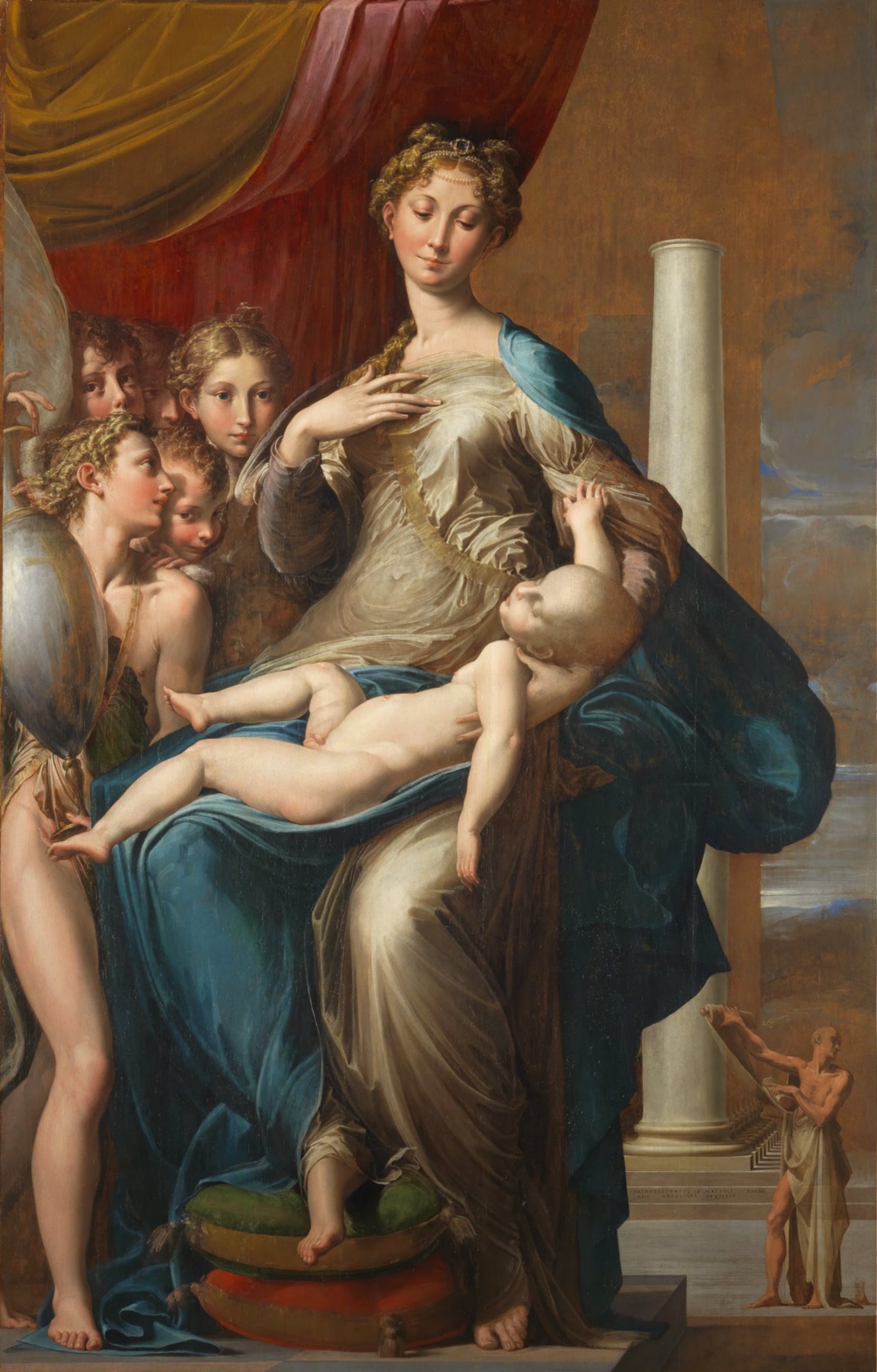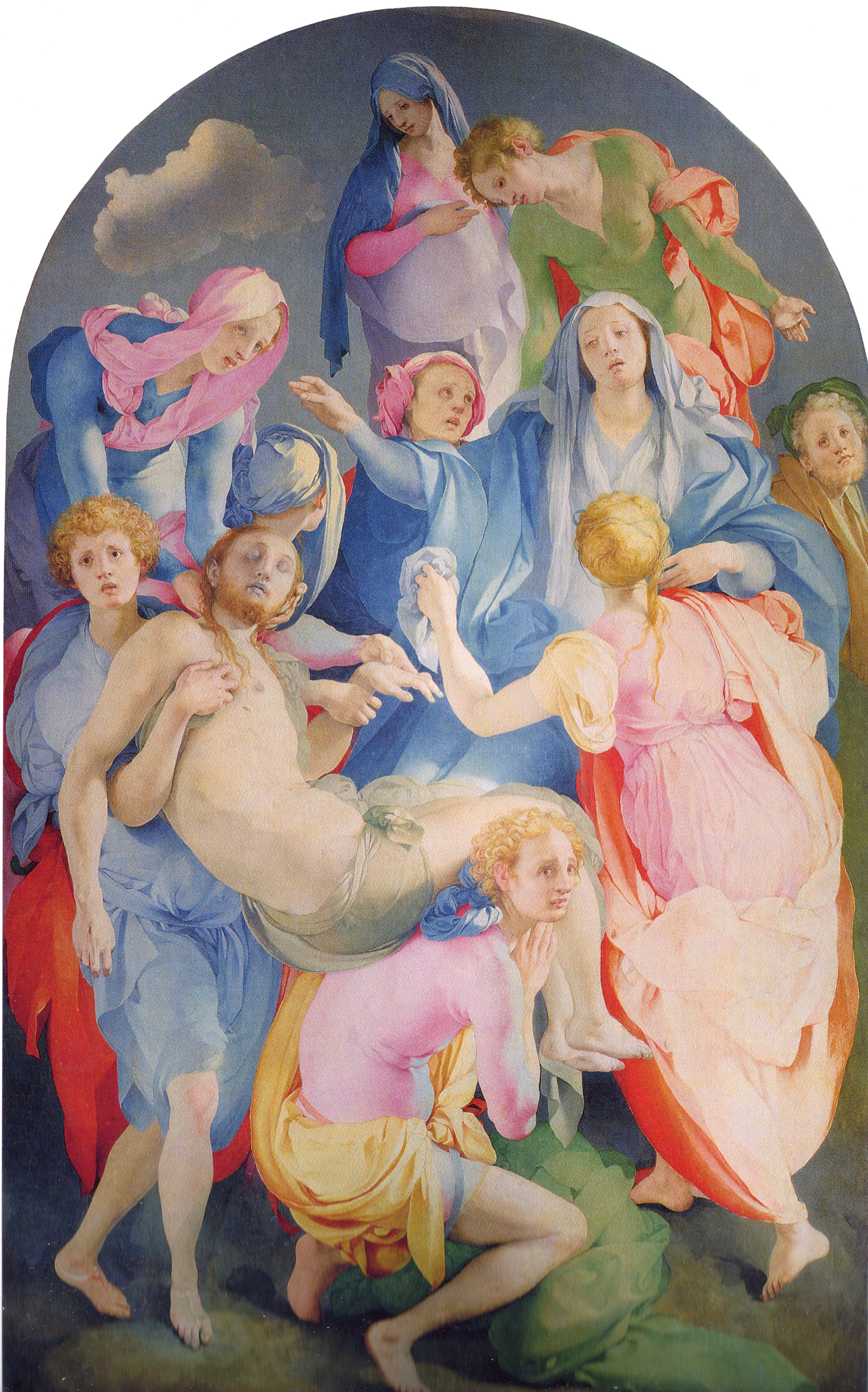Mannerism (1520–1600): Elegance Under Pressure — A Student’s Guide to the Late Renaissance Rule‑Breaker
How to spot it, why it happened, and five works to learn the look—fast.
After the poised balance of Leonardo, Raphael, and Michelangelo, a strange beauty took center stage. Figures stretched like swans, space bent like theater, color cooled to pearl and ice. This later Renaissance style—called Mannerism—was not a mistake in drawing; it was a choice: elegance as performance.
Below, you’ll get a plain‑English definition, a visual checklist, the short history behind the style, and five essential works to train your eye. We’ve added museum‑grade sources and image credits so you can trust what you’re learning.

What is Mannerism?
Mannerism names the stylish late Renaissance that followed the “high” balance of the early 1500s. Instead of natural calm, artists favored maniera—a cultivated manner: elongated bodies, sophisticated poses, clever distortions, and a polished, courtly finish. For a compact museum definition, see the National Gallery’s glossary entry and the Met’s overview of the period and its artists (National Gallery, London; The Met).
Quick visual checklist
- Elongated proportions: swan necks, tapering torsos, finely wrought fingers.
- Grace under strain: elegant yet impossible poses—contrapposto turned into choreography.
- Cool, enamel color: pearly pinks, steel blues, porcelain skin.
- Stagey space: shallow yet elastic; columns and draperies as props.
- Finish and finesse: surfaces polished to a courtly sheen.
Why did it emerge?
Three turning points (remember these)
- 1520: Raphael dies—his perfect balance becomes a high bar nobody can ignore.
- 1527: The Sack of Rome scatters artists, reshaping workshops and patronage.
- Mid‑century: Courts in Florence, Mantua, and Rome favor glittering sophistication.
Rather than simply failing at naturalism, Mannerist painters leaned into refinement. They courted expert audiences who prized invention, complexity, and virtuosity. In Giorgio Vasari’s famous Lives, the word maniera (manner) often signals this cultivated taste—an idea you can sample in the period’s own voice via a public‑domain translation of Vasari (Project Gutenberg: Vasari).
How Mannerists built the look
Composition: choreography, not calm
Where High Renaissance compositions feel settled, Mannerist scenes spiral, tilt, and entwine. Triangles loosen into arabesques; diagonals become dance‑steps. Frames crop boldly, as if we walked into mid‑scene.
Figure: the elegant exaggeration
Proportions stretch on purpose: column‑like necks; serpentine spines; hands that speak with long, tapering fingers. It’s the body as rhetoric—an expressive script for grace.
Color and light: cool enamel
Instead of warm, earthly light, many painters polish skin to porcelain, set against wintry blues and violets. Highlights read like fired glaze.
Space & scale: architectural theater
Columns and curtains stage the action; scale flexes as needed for effect. The picture is a set, not a window.
Media & finish
From fresco cycles in chapels to jewel‑like panel paintings and court portraits, the unifying thread is finesse. Even when subjects turn dramatic, edges stay clean.
Five works to learn the style
Parmigianino, Madonna with the Long Neck (1534–40)
Look at the proportions: Mary’s swan‑neck, the child’s languid length, the impossibly elegant hand. Drapery flows like silk water; a lonely marble column suggests a palace just offstage. Everything declares style—artifice worn like jewelry. For context and details, see the museum’s object page (Uffizi).

Pontormo, Deposition (c. 1526–28)
This chapel altarpiece in Florence is weightless drama: figures hover and loop, colors flash in sherbet tones, and the cross itself is missing—turning grief into a swirling ballet. The composition is a lesson in “grace under strain,” a Mannerist signature.

Bronzino, Eleonora of Toledo with her Son (1545)
A court portrait as a symphony of surface: brocade that nearly steals the scene; skin like glazed porcelain; a hand posed with sovereign poise. Bronzino’s finish is dazzling and aloof—the courtly face of Mannerist art.

Giulio Romano, Fall of the Giants (c. 1526–34)
In Mantua’s Palazzo del Tè, architecture and painting fuse: walls tilt, gods tumble, and the room itself seems to shake. It’s Mannerism as immersive spectacle—cleverly constructed artifice built to impress a courtly audience.
El Greco, View of Toledo (c. 1596–1600)
By century’s end, Mannerist elongation and expressive distortion travel with El Greco from Italy to Spain. His tempestuous Toledo trades calm landscape for spiritual weather. For an authoritative artist overview, see the Prado’s page (Museo del Prado).
Courts, cities, and networks
Mannerism thrived where taste and spectacle mattered: Medici Florence, Gonzaga Mantua, papal Rome. Workshop ties and print culture spread the look; fresco cycles and portraits advertised it. To hear the period speak for itself, browse a free, public‑domain English translation of Vasari’s Lives—a cornerstone of how the sixteenth century thought about maniera (Vasari via Project Gutenberg).
Beyond Italy: Northern and Spanish Mannerisms
In France and the Low Countries, the style blends with local ornament; in Spain, El Greco elevates distortion into visionary feeling. If you’ve read our guide to surface‑first modern color in Les Nabis, you’ll recognize how a strong “look” can cross borders and adapt to new audiences.
Compare at a glance
High Renaissance
- Balanced triangles, calm space
- Ideal anatomy, measured light
- Harmony as the goal
Mannerism
- Elongation, artificial poses
- Cool, enamel surfaces
- Style as performance
Baroque
- Drama, deep space, diagonals
- Warm chiaroscuro, movement
- Emotion as persuasion
Legacies you can still feel
Mannerism trained viewers to relish artifice—composed hands, designed fabrics, and frames that participate in the picture. That taste shaped early modern collections; it even colored how paintings were reframed in later centuries (for a specialist view into how museums think about frames around Mannerist pictures, see this deep‑dive on reframings at the National Gallery, London: The Frame Blog).
If you enjoy how style can be a principle of design, you might also compare Mannerist elegance with modern geometric clarity in our De Stijl vs. Constructivism guide, or with the public‑facing visual language of the Harlem Renaissance.
Scholarly angle: Want a concise academic take on “artificiality” and self‑fashioning in Mannerism? This open‑access essay frames the style’s cultivated look as a social signal (CORE PDF).
Gallery (swipe to browse)



See also on Artoholica
Les Nabis (1888–1900) De Stijl vs. Constructivism Harlem Renaissance
Where to read more (museum‑grade)
FAQ: Mannerism, answered simply
What is Mannerist art in one sentence?
Late Renaissance art (c. 1520–1600) that deliberately stylizes nature—elongated proportions, elegant poses, and polished surfaces—for a courtly, sophisticated effect.
How is Mannerism different from the High Renaissance?
High Renaissance seeks balanced, lifelike harmony; Mannerism stretches and stylizes that harmony into graceful artifice—cooler color, stranger poses, and theatrical space.
Did Mannerists “forget” anatomy?
No—most trained on classical models and refined drawing. Distortions are calculated, used for expressive emphasis and courtly style.
Where did Mannerism flourish?
Especially Florence, Rome, and Mantua—centers of powerful courts and collectors—before variants spread north and into Spain.
Who are three key Mannerist artists to learn first?
Pontormo (compositional grace), Parmigianino (elegant elongation), Bronzino (court portrait finish)—with El Greco as a later, expressive heir.
What’s one painting that sums it up?
Parmigianino’s Madonna with the Long Neck: the swan‑neck pose, icy palette, and polished drapery are textbook Mannerism.
Is there a quick, reliable glossary definition?
Yes—the National Gallery (London) glossary offers a concise summary you can trust.
Explore prints inspired by Old Masters
If this elegant, stylized world speaks to you, browse related art prints in our shop—curated for rooms that love a touch of Renaissance poise. Explore collections.

0 comments